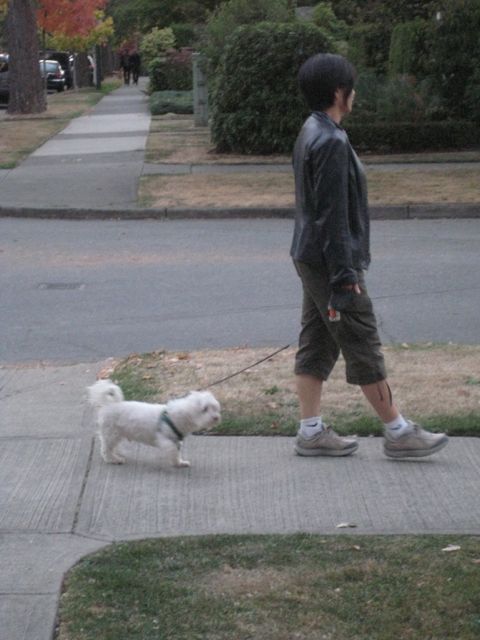Day in day out, dog-walkers go about their neighbourhood with Fido, and can’t help but notice changes and trends in the weather, when trees come into bloom, and where water ponds in low-spots. I believe that this makes dog-owners, and other locals, ideal observers of climate change at the neighbourhood level, provided they are armed with the right knowledge and tools to recognize and record the signs of local climate change.

Perhaps we think too much about ‘global warming’ and do ‘think globally’, when we need to spend more time ‘thinking locally’ about ‘local warming’ and other effects. How many starving polar bears have you met on your block? How many retreating glaciers can you see from your house? As studies have shown (Leiserowitz, 2007), such disconnects from everyday life help explain why we have been unsuccessful in more fully engaging the public and policy makers on climate change issues.
Visualizing Climate Change investigates, among other ways of motivating communities with visual media, how local citizens such as dog-walkers can look for clues to climate change in their own neighbourhood.
In my journeys through local neighbourhoods in many countries, I have been able to piece together the local face of climate change, not the one that’s hundreds or thousands of miles away and therefore not so compelling. Documented in a unique visual catalogue of hundreds of photographs and maps, the images we collected reveal a way to see your neighbourhood in a whole new light: through a climate change lens, helping people to recognize not only what the impacts of climate change look like, but also its causes and solutions. For example dog-walkers see people renovating their houses with new additions, insulation or windows (all of which influence their carbon footprint), how they commute to work (SUV or bike?), and how many are growing vegetables (with low food-miles). But most are not making the link to climate change in their neighbourhood. So, they can see who is installing solar hot-water panels but may not be aware that they are witnessing climate change mitigation to reduce natural gas use; or that the neighbour who storm-proofs her house and installs a rain-butt is adapting to wilder weather and worsening drought.
With some simple guidance on what local climate change impacts and solutions look like, neighbourhood residents can start to make the connections for themselves. Dog-walkers these days have easy access to cool visual tools such as smartphone cameras and social media, for recording evidence of local climate change. Assembling a revealing and compelling photo-album with which to communicate climate change to your neighbours, family, friends and colleagues, might be only a few clever clicks away.
Armed with such tools, could dog-walkers be powerful agents of social change?
References:
Leiserowitz, A. (2007) ‘Communicating the risks of global warming: American risk perceptions, affective images, and interpretive communities’, in S. Moser and L. Dilling (eds.). 2007. Creating a Climate for Change: Communicating climate change and facilitating social change. Cambridge University Press, Cambridge, UK.